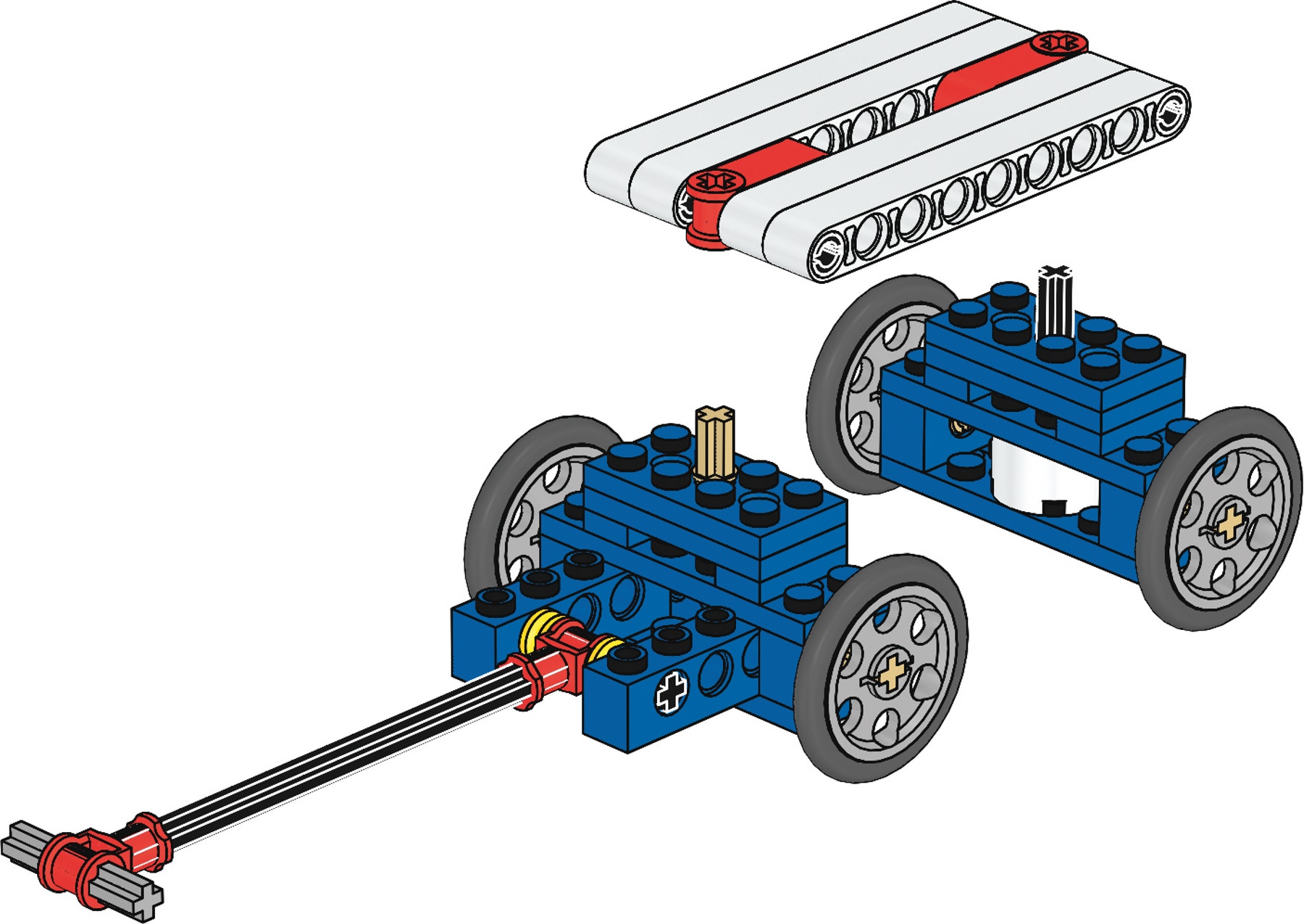Hand Cart
Apply knowledge and skills related to simple machines, mechanisms, structures, stability, performance, and fair testing.

The Problem
(3-5 Minutes)
Hand carts are often used to move small loads in confined places. One area of use is in libraries to move rows of heavy books from one area to another. They need to be able to carry quite heavy loads, so they must be stable and highly maneuverable.

Design Brief
(3-5 Minutes)
Your task is to design and build a hand cart that could be used in a large library to move as many books and in as confined a space as possible.
Motivation
To help in the design process, instruct the students to look at the picture on the front of the unit and read the accompanying text.
Alternatively, let the students search the Internet to learn more about the appearance, shape and handling of a hand cart.
Discuss the constraints and functions they will have to take into account.
Suggested Model Solution
Note: You are advised not to share this image with students.


Fair Testing and Fun
(15-20 Minutes)
While the activity is in progress, encourage the students to relate their knowledge, skills and understanding to the task at hand by asking:
How will your hand cart work?
What sort of structure will you use to support the steering mechanism?
What sort of steering mechanism will you use?
What sort of structure will you use to hold the books?
How will you ensure that the hand cart is maneuverable?
How will you ensure that the hand cart is stable?
How will ensure that the hand cart is safe to use?
When the activity is almost finished, encourage the students to reflect on both the product that they have produced and the processes they have used by encouraging the students to:
Carry out tests to evaluate the performance of the hand cart:
- How much can it carry?
- How easy is it to steer?
- How maneuverable it is?
Record their design by drawing it or taking digital photos of it.
Add notes describing the way the model works and how this might be improved to get better performance.
Describe how to ensure safe use of the model.
Write briefly on what went well in their design task and what they could have done to improve it.
Teacher Support
Students will be able to apply the knowledge and skills of:
Simple machines, mechanisms and structures
Engineering design
Communicating and team working
Applying principles of safety and product reliability
9686 Simple & Powered Machines Set (two students per set recommended)
Materials to ensure safety e.g. grating, bars, soft edges
Spare LEGO® bricks as books e.g. the LEGO weight element
Crosscutting Concepts
Cause and effect: Mechanism and explanations
Systems and system models
Structure and Function
Stability and change
Science and Engineering Practices
Asking questions and Defining Problems
Developing and using models
Planning and carrying out investigations
Analyzing and interpreting data
Using mathematics, Informational and Computer Technology, and computational thinking
Constructing explanations and designing solutions
Engaging in argument from evidence
Obtaining, evaluating, and communicating information
Common Core Mathematics Standards
MP4 / 7.EE.B
Common Core English Language Arts
SL 6.1 / SL 6.4 / SL 6.6 / SL 7.1 / SL 7.4 / SL 8.1 / SL 8.4
RST 6-8.1 / RST 6-8.2 / RST 6-8.3 / RST 6-8.4 / RST 6-8.5 / RST 6-8.10
WHST 6-8.2 / WHST 6-8.4
Student Material
Share with:
 Google Classroom
Google Classroom



